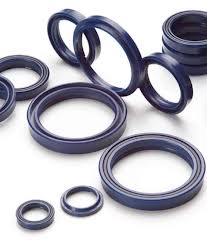The Dynamic Seal
 Reciprocating motion between two members adds a major dimension to the sealing problem. Friction, and its accompanying wear, joins the list of factors which the design engineer must contend with; temperature, fluid compatibility, pressure.
Reciprocating motion between two members adds a major dimension to the sealing problem. Friction, and its accompanying wear, joins the list of factors which the design engineer must contend with; temperature, fluid compatibility, pressure.
The dynamic seal used for sealing a reciprocating member must meet static sealing requirements at its contact area with the stationary member, and also seal effectively at its contact area on the reciprocating member.
The ideal Dynamic Seal should:
- prevent leakage over the pressure ranges encountered
- have long life with minimum maintenance
- be compatible with fluids at operating temperatures and pressures
- have sufficient integrity to avoid fluid contamination
- be easy to install, remove and replace
- exclude foreign material
- be inexpensive
Curiously, the first two properties are at odds with each other in a dynamic sealing situation. A good compression forces holding the dynamic seal against a reciprocating member accelerate seal wear and shorten service life. Therefore, every dynamic seal design is a compromise to produce an acceptable balance between these two desirable properties. The great variety of dynamic seal shapes and materials allows the designer to select the degree of compromise for a particular application while, at the same time, satisfying the other requirements on the list.



